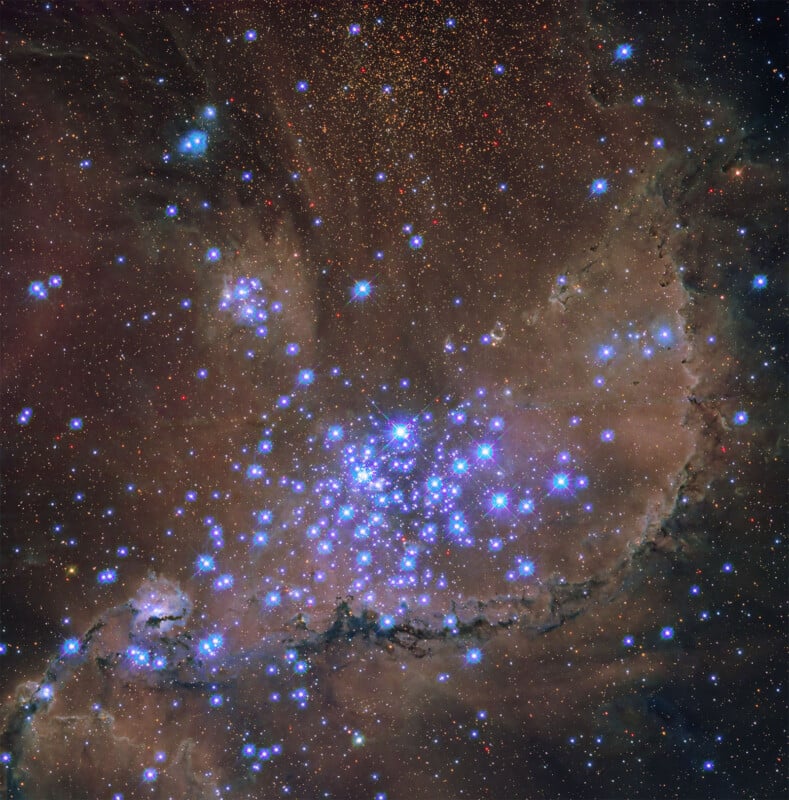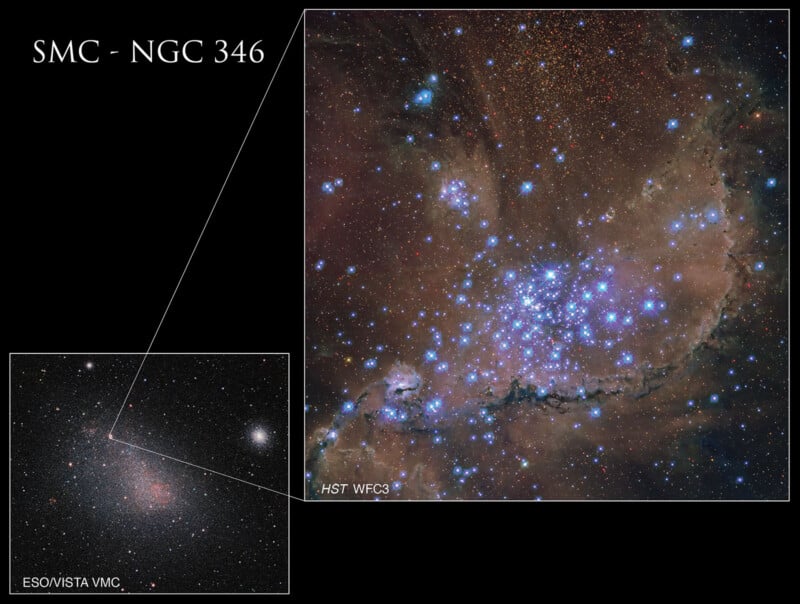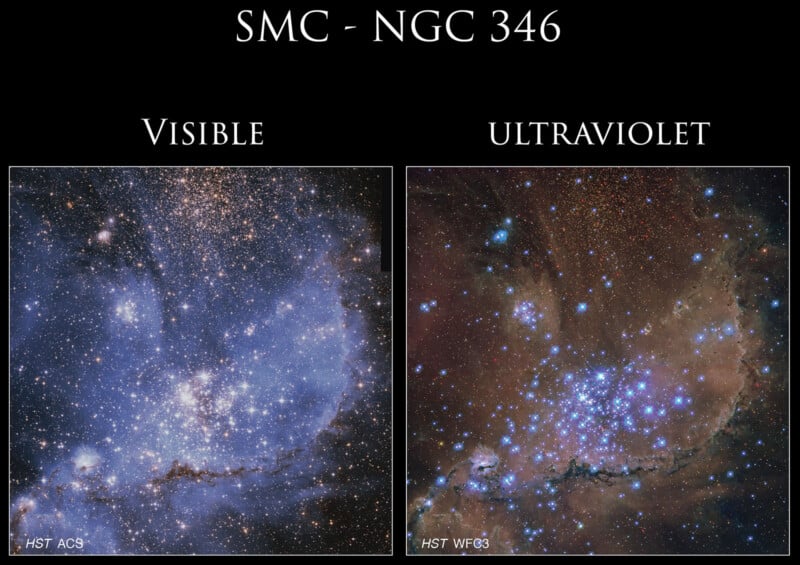You’ve Never Seen a Star Cluster Quite Like This Before
![]()
The Small Magellanic Cloud (SMC) is about 210,000 light-years away. The SMC is one of the Milky Way galaxy’s nearest neighbors and is one of its “satellite” galaxies. Inside the SMC is a star cluster, NGC 346, and it is one of the most beautiful cosmic sights out there.
Although the James Webb Space Telescope (JWST) gets a lot of attention, and with good reason, the Hubble Space Telescope (Hubble) is not only still working hard in space, despite a few hiccups, it is capturing mind-blowing space photos that show the cosmos in fresh ways.
Using its sophisticated imaging sensors, Hubble is uniquely able to make sensitive, ultraviolet observations of cosmic objects, including NGC 346. The new image, seen in full below, shows the NGC 346 star cluster in gorgeous ultraviolet, which makes it much easier to see the many stars inside the cloud.

“Nested within the SMC is this spectacular star cluster, known as NGC 346. Its hot stars unleash a torrent of radiation and energetic outflows, which erode the denser portions of gas and dust in the surrounding nebula, N66. Dozens of hot, blue, and high-mass stars shine within NGC 346, and astronomers believe this cluster contains more than half of the known high-mass stars in the whole SMC,” NASA explains.

Alongside its new ultraviolet observation of NGC 346, the Hubble Space Telescope has also peered at the star cluster in visible light. Comparing the two views shows a dramatic difference in detail.

The observations were performed to help scientists learn more about how star formation impacts the interstellar medium, which is the gas distributed through all of space. The Small Magellanic Cloud is an exciting stellar nursery because it is a relatively low-metallicity galaxy. Elements heavier than hydrogen and helium are “metals” to astronomers, and the SMC has significantly fewer metals than most parts of the Milky Way galaxy.
“This condition helps make it an excellent example of a galaxy similar to those that existed in our early Universe, when very few heavy elements were around to incorporate,” NASA explains.
Image credits: NASA, ESA, and C. Murray (Space Telescope Science Institute); Image Processing: Gladys Kober (NASA/Catholic University of America)